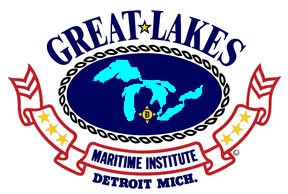
The Maritime History of the Great Lakes site is managed by Walter Lewis
Click here to Contribute your own images to the collection.
Certain parts of the collection contain historical language and content that some may consider offensive, for example, language used to refer to racial, ethnic and cultural groups. Items in the collection, their content and their descriptions reflect the time period when they were created and the view of their creator.





The steam tug Champion was owned in 1880 by Stephen Benedict Grummond of Detroit. Stephen Benedict Grummond was Mayor of Detroit in 1884 and 1885. His re-election would have positioned him to run for Governor. It was a close election. His success in building his small fleet of vessels started when he worked on the lakes as a teenager in St. Clair County. He attended school in the Winter.
Stephen Benedict Grummond captained the first boat he bought and was able to keep it from sinking or burning, like the steam tug Champion did in 1903. Stephen owned one or two package freight vessels which also carried passengers. Ports the freighters stopped at were Cleveland and those ports west of there. These vessels also went up the St. Clair River to Port Huron and occasionally along Lake Huron.
He built a house on Mackinaw Island. The building still exists and has some windows which are in the shape of port holes. Stephen was quite a character. Some how his portrait showed up on a wall of a room in the British fort on Mackinaw Island which was a mystery of who it was for a couple decades.
Stephen’s mother was a descendant of Alexander Harrow. Alexander Harrow captained several British vessels on the Great Lakes. He brought supplies for the British fort in Mackinaw City and was Captain of the vessel which was used to move the British from Mackinaw City to Mackinaw Island. He took about 80 combatants from Detroit stopping on the current day Canadian side for more men to the Battle of Fallen Timbers
Alexander Harrow had an argument with his superior officer and left the service. He set up his farm on the west side of the St. Clair River which would have upset the British government if they knew. He had a pension from the British and when Michigan became either a territory or a state he and two of his sons received land. In the mid 1930’s this land was somehow obtained by the State of Michigan and became Algonac State Park. I have a copy of a letter written by the farmer who owned the land prior to the transfer to the state saying he did not grow crops on the graves of Alexander, a couple of his children, and his wife (who at age 12 in Kentucky saw her parents killed by natives trying to stop settlers from coming through the Cumberland Gap. She was made a slave. Stephen bought her for a small keg of whiskey from the natives. He took her to a convent for the nuns to teach her European ways. He had to marry her in the Catholic Church before the nuns would give her back. He again married her when an itinerant minister from Monroe, Michigan came along.)
There are six passages citing Alexander Harrow in a 2017 published book about slavery amoung Europeans and Native Americans. The book was written by Dr. Tiya Miles and is titled “Dawning of Detroit freedom and slavery in the City at the straights”. Alexander owned slaves to be able to work the land as a farm.
The graves of Alexander, his wife and a few of his children are still at the land occupied by the Algonac State Park. The problem is the markers were removed. The Administrstive officials at the park are unable to identify where the graves are.
Getting back to the steam tug Champion, it was used to take Benjamin Horton and his wife Matilda Louise Grummond and their five daughters and one son to Vermilion, Ohio in 1880. Stephen operated a boat repair yard in Vermilion.
Comments may be edited for appropriate language and HTML.
All fields are required.
Not all comments will be posted.
Your email address will be stored so that we may contact you again about your comment, but will not be displayed to the public, or otherwise shared, without your permission.
Comments will not be posted until they have been reviewed.
To make a a simple paragraph break, simply hit [Enter] twice